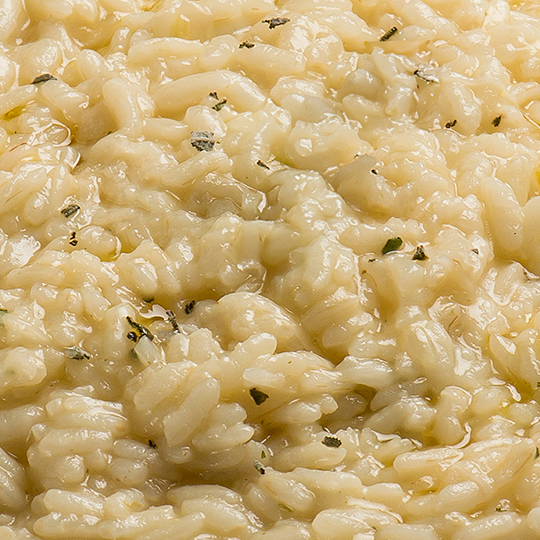
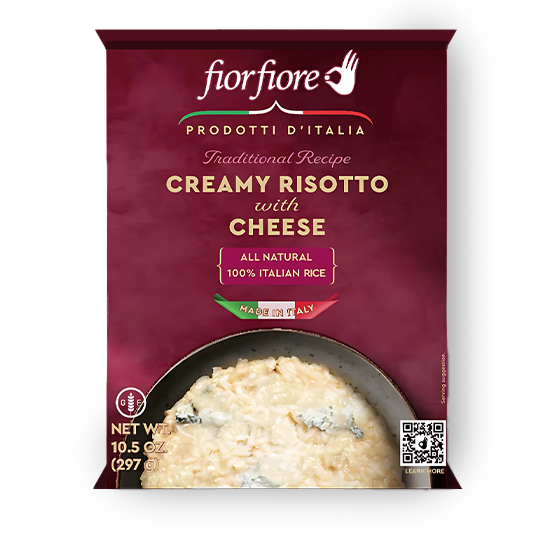

Creamy Risotto with Cheese
Creamy Risotto with Cheese brings together the comfort of traditional Italian risotto with a rich, cheesy flavor, making it a satisfying dish that can be prepared in minutes.
What is Creamy Risotto with Cheese? This dish features velvety Arborio rice cooked to perfection, infused with a blend of fine Italian cheeses that melt into each grain of rice for an indulgent, creamy experience.
Key Features:
- Rich Creaminess: The Arborio rice creates a smooth and velvety texture, enhanced by the melted cheese.
- Cheesy Goodness: A blend of cheeses adds a luscious, decadent flavor to the risotto.
- Convenience: A perfect ready-made meal that’s easy to prepare.
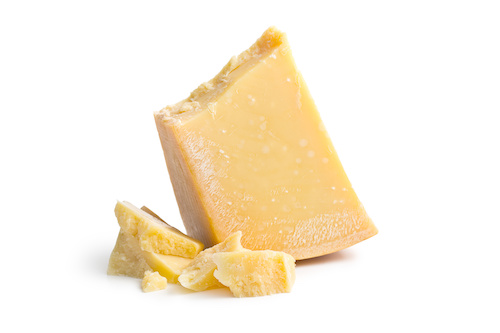
Ingredients
Parboiled rice 76,6%, whey powder, pasteurized process cheese food powder
(cheese blend [pasteurized milk, salt, enzymes, lysozyme from egg]) 4,2%, rice starch, salt, corn
starch, onion powder, sunflower oil preparation (sunflower oil, glucose sypup, corn starch), yeast
extract, flavor, powdered grated Grana cheese (milk, salt, rennet) 0,3%, grated Romano cheese
(pasteurized sheep's milk, salt, rennet, enzymes) 0,2%, pasteurized process Mozzarella cheese
powder (pasteurized milk, salt, rennet) 0,2%, Gorgonzola sauce powder (Gorgonzola cheese
[pasteurized milk, salt, rennet, cheese cultures], cream) 0,2%, dehydrated parsley.
Preparation
How to Prepare:
Stove Top Cooking Instructions:
1. Empty pouch contents into a non-stick saucepan.
2. Add 4 ½ cups of cold water to the pan.
3. Uncovered, bring the mixture to a boil, stirring occasionally.
4. Once boiling, reduce heat to a simmer, continuing to stir occasionally.
5. For an al dente texture, cook uncovered for 30-32 minutes, until water has completely evaporated. For a softer texture, cook uncovered for an additional 5 minutes.
6. Remove the pan from heat and add a tablespoon of butter.
7. If desired, top with grated Parmesan cheese and stir until creamy.
| Nutrition Facts | Per 1/4 cup (30 g) | %Daily Value* | Read more | |
|---|---|---|---|---|
| Calories | - | |||
| Fat | - | - | ||
| Saturated | - | - | ||
| Trans | - | |||
| Carbohydrate | - | |||
| Fibre | - | - | ||
| Sugars | - | - | ||
| Protein | - | |||
| Cholesterol | - | |||
| Sodium | - | - | ||
| Potassium | - | - | ||
| Calcium | - | - | ||
| Iron | - | - | ||
| Thiamine | - | - | ||
| Riboflavin | - | - | ||
| Niacin | - | - | ||
| Folate | - | - |
*5% or less is a little, 15% or more is a lot.
Milan: A Short History of Italian Risotto
Rice arrived in Europe just over 500 years ago, making it a late addition to Old-World cuisine. Originally brought from the Middle East and used as medicine, it became food only after Spanish rulers introduced it to Naples in the 1400s. By the 1500s, northern Italy—especially the Milan area—was covered in rice fields, but for centuries it was eaten simply in soups or as rice flour bread.
The first true risotto appeared in 1853 when Giovanni Felice Luraschi published the classic risotto alla milanese recipe, elevating rice from peasant fare to a prized dish. In the 20th century, Italian growers developed signature varieties like Carnaroli, Arborio, and Vialone, and risotto spread across the country, inspiring regional specialties that continue to define Italian cuisine today.
Submit your review | |

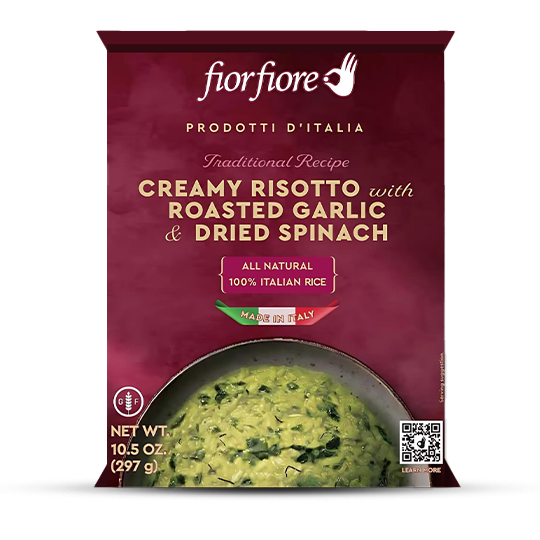
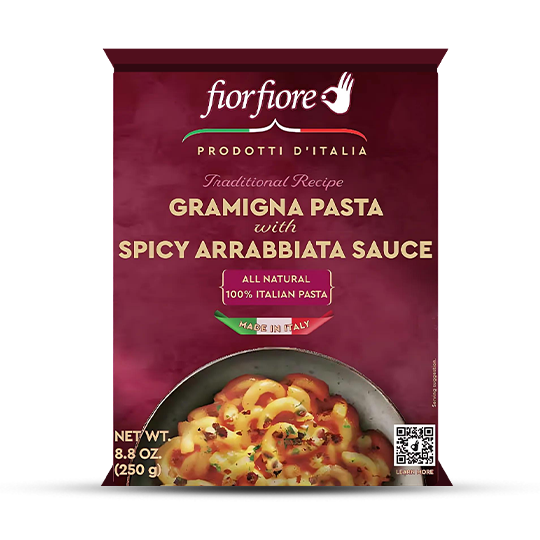
 FiorFiore USA
FiorFiore USA